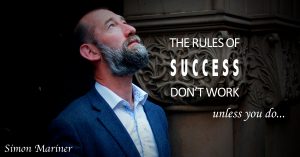Was Botticelli’s Birth of Venus art or explicit Renaissance material?
There is sometimes a fine line between the two, and both are hard to clearly define. But as Supreme Court Justice Potter Stewart famously said of explicit material in 1964, “I know it when I see it”.
Great leadership is much the same. Hard to clearly define, but we all know it when we see it.
However, knowing leadership when you see it doesn’t help identify which traits you need to develop to become a truly great leader. If great leaders are made and not born, then what are the necessary ingredients?
The problem with identifying these traits is the fact there is no prototype or perfect role model for great leadership.
Back in the 1840s, one of the first theories of leadership was called Great Man Theory. It assumed leadership traits were intrinsic, meaning great leaders were born and not made.
The process was simple. Step one, compile a list of good leaders and bad leaders, good presidents and bad presidents, good generals and bad generals, etc. Step two, hold these lists up against each other and look for common characteristics.
Working chronologically for example, it would pair up Julius Caesar and Alexander the Great and identify similarities in their profiles. They would then add another great leader, say Napoleon, and add to the list of common factors. The assumption being these common factors should point us in the direction of what makes a great leader.
Julius Caesar, Alexander the Great and Napoleon did indeed have some remarkably common characteristics. They were all quite short and interestingly they were all left-handed. Another common factor was at one stage in each man’s life they all contracted venereal disease.
What can we conclude from Great Man Theory? A great leader today will be a short, left-handed male and let’s say, a risk taker!
In 1860 English philosopher Herbert Spencer summed it all up by affirming these great heroes were nothing more than a product of the times and social conditions they lived in. So much for Great Man Theory – but despite being sexist and utter garbage, it was a start.
Next came Trait theory in the 1930s which acknowledged that some great leaders are born, but others developed certain qualities (or traits) that would hold them in good stead. Things like intelligence, creativity and a sense of responsibility.
The field of psychometrics was still quite new, and measurements of these traits were both difficult and unreliable. All Trait Theory could offer beyond Great Man Theory was that these individuals were perhaps slightly taller and slightly more intelligent than your average Joe.
Let’s skip through the behavioural theories popularised in the 1940s and 1950s, the contingency theories and transactional leadership theories in the 1960s, to the transformational leadership theories in the 1970s.
Transformational Leadership focuses on the great leader’s ability to develop strong relationships and build trust. Thus creating a secure and motivational environment for both the leader and the follower.
Therefore, great leadership is about the quality of human interaction. The great leader is one who is able to transform the followers’ perception of the world using their inspiring and charismatic personalities.
In short, great leaders are those who can provide a sense of safety and belonging for followers, who can easily identify with the leader and a common purpose.
The Transformation Leadership theorists were onto something here. Which is perhaps the reason there have been no new theories offered for nearly five decades.
If we can agree that human interaction is ‘what’ great leadership is about, the central question is ‘how’ to achieve it?
The answer is two critical skills that none of us are born with, yet some are able to develop over time. In other words, great human interaction is a combination of first having an advanced level of self awareness (or EQ) and second being a highly effective communicator.
These are both skill-sets that can be discovered, learned and refined.




